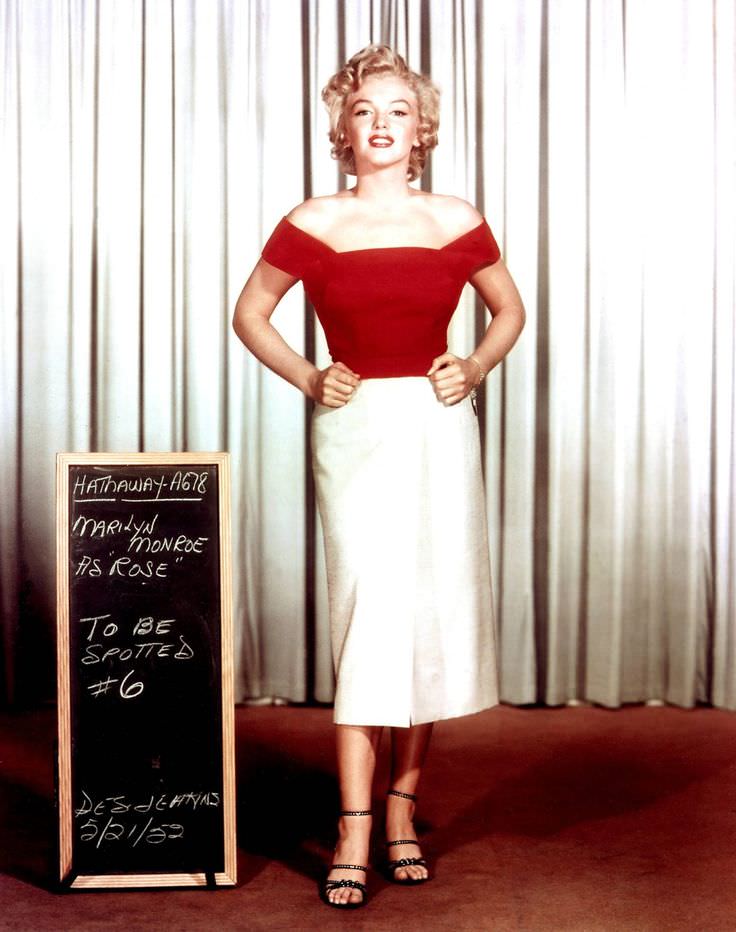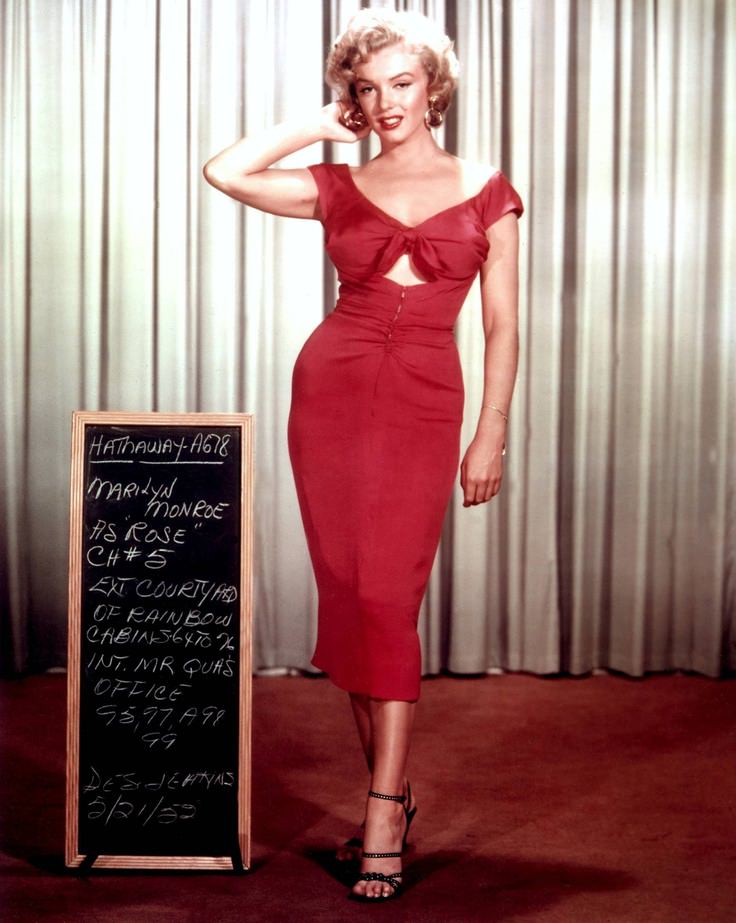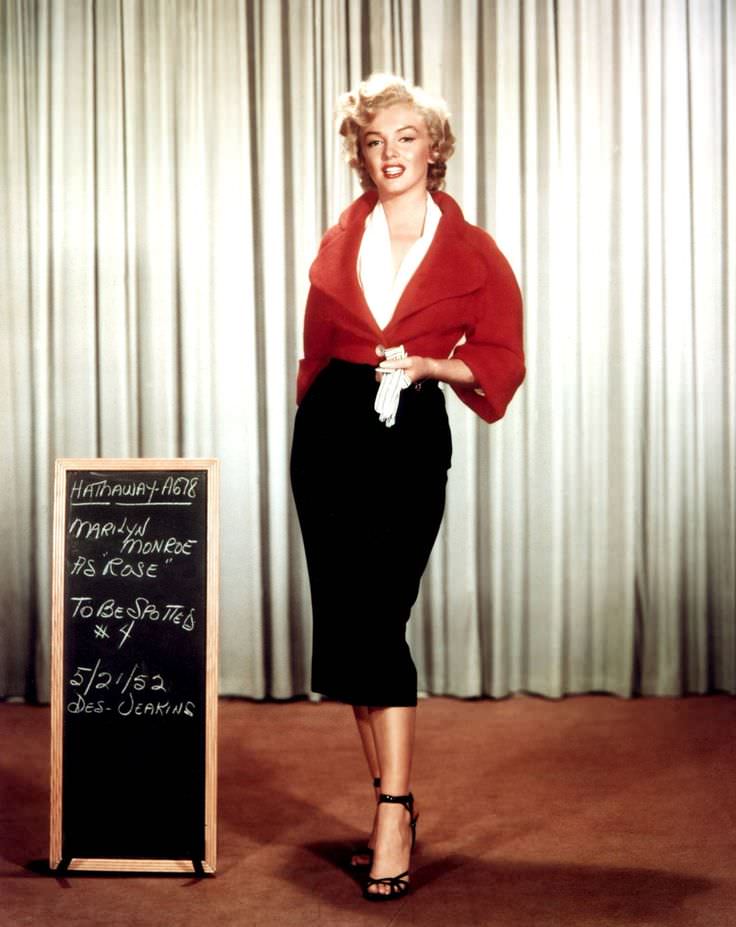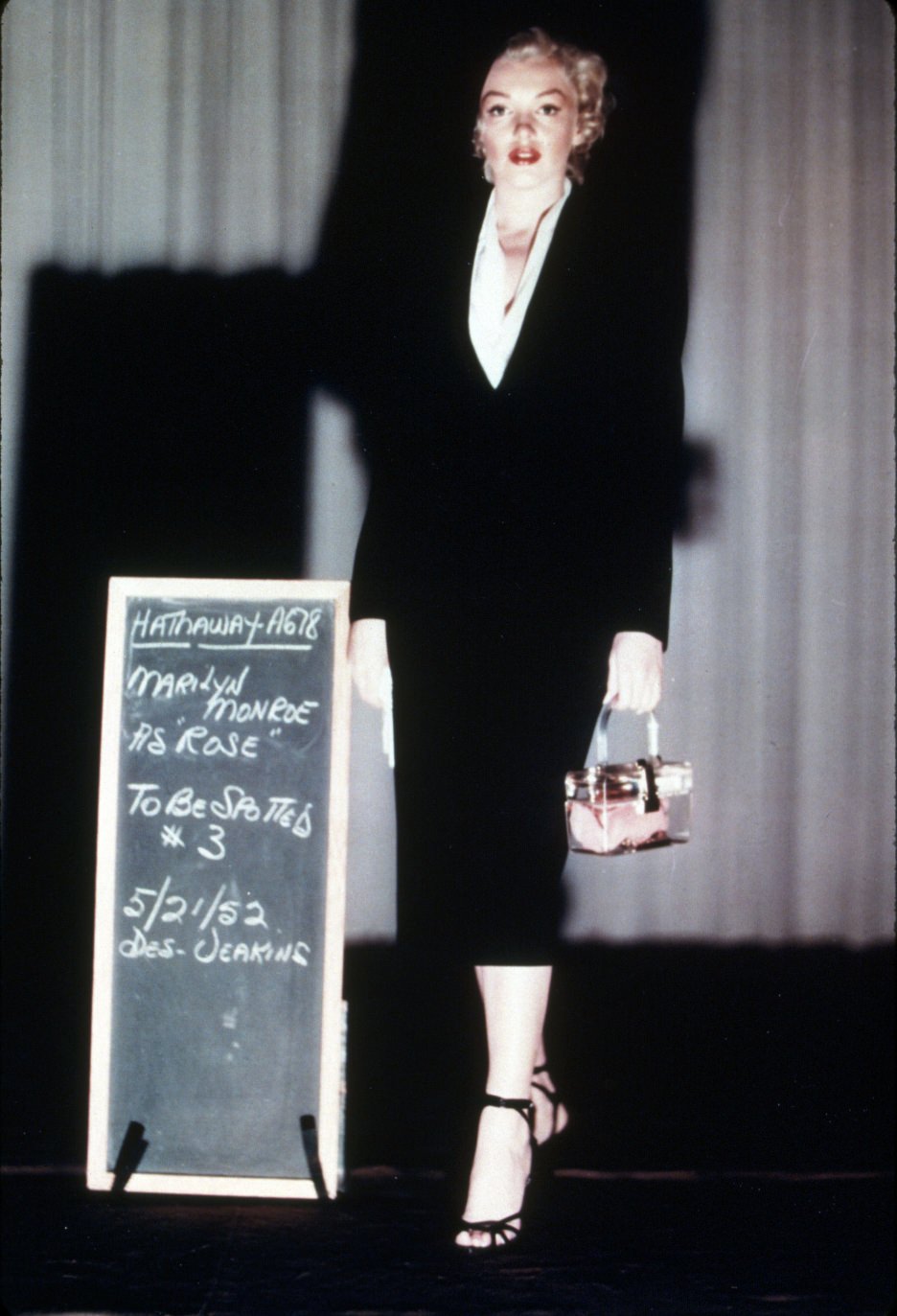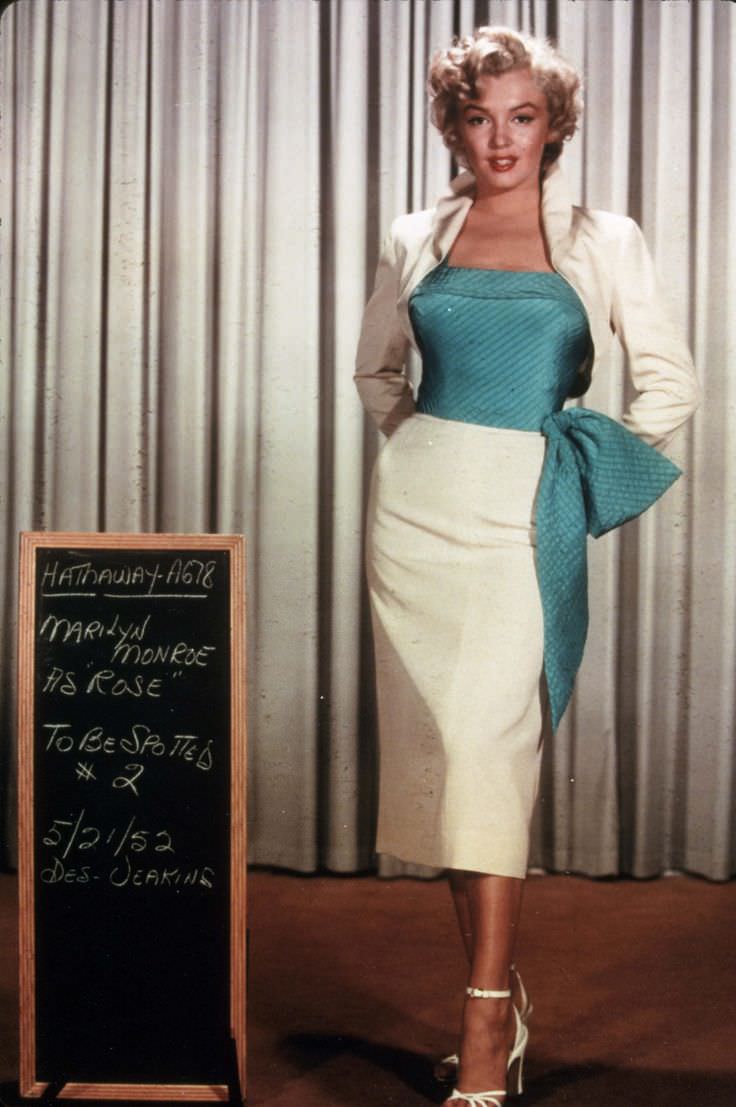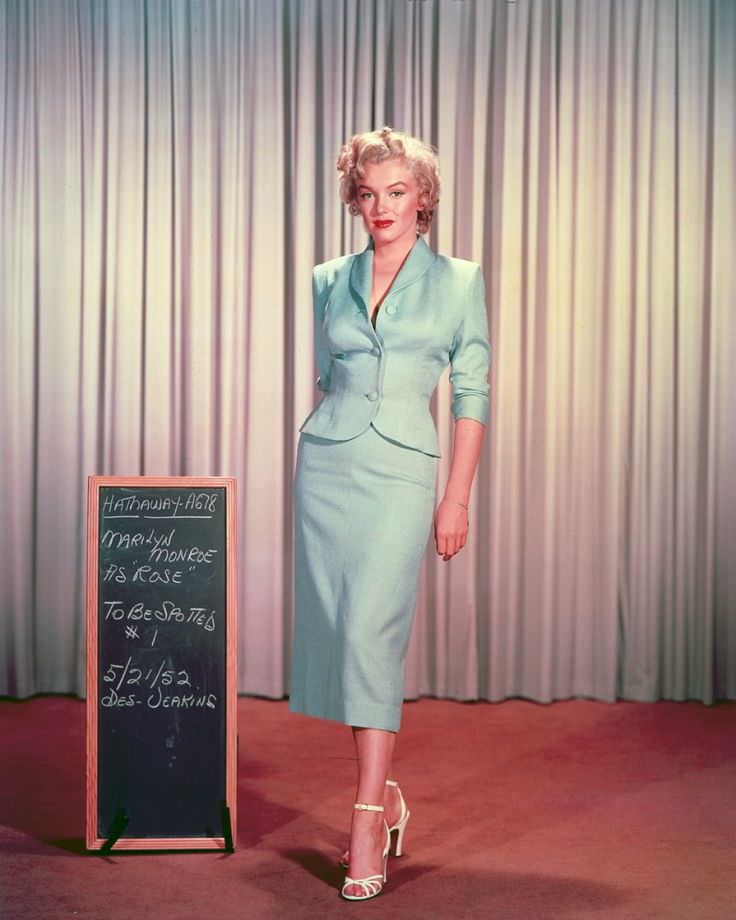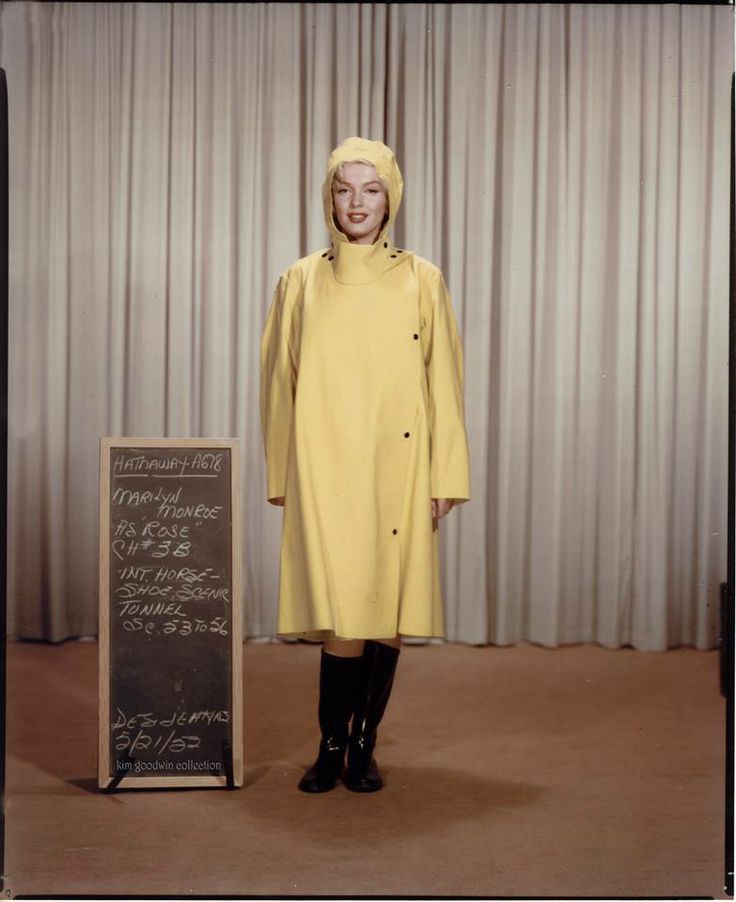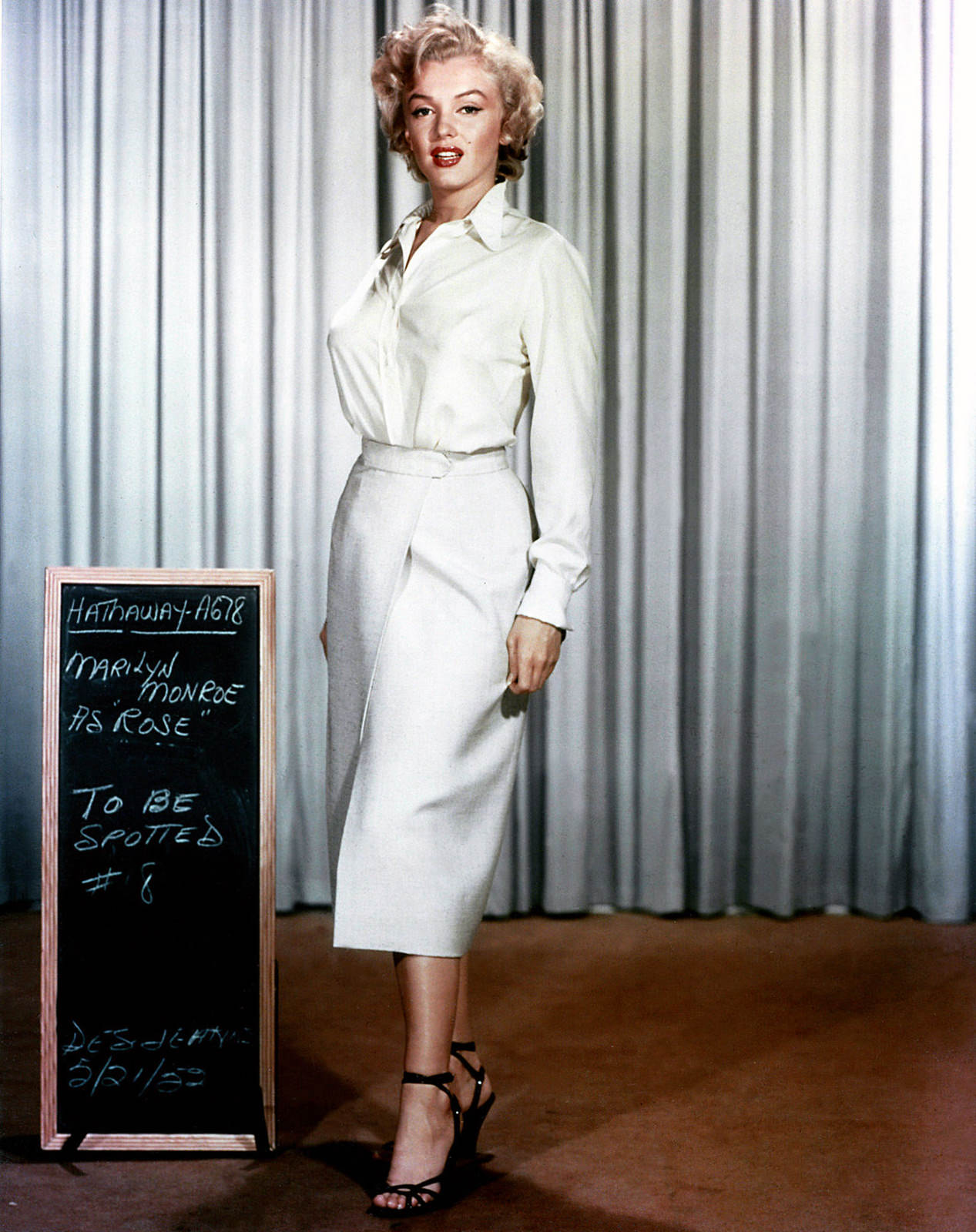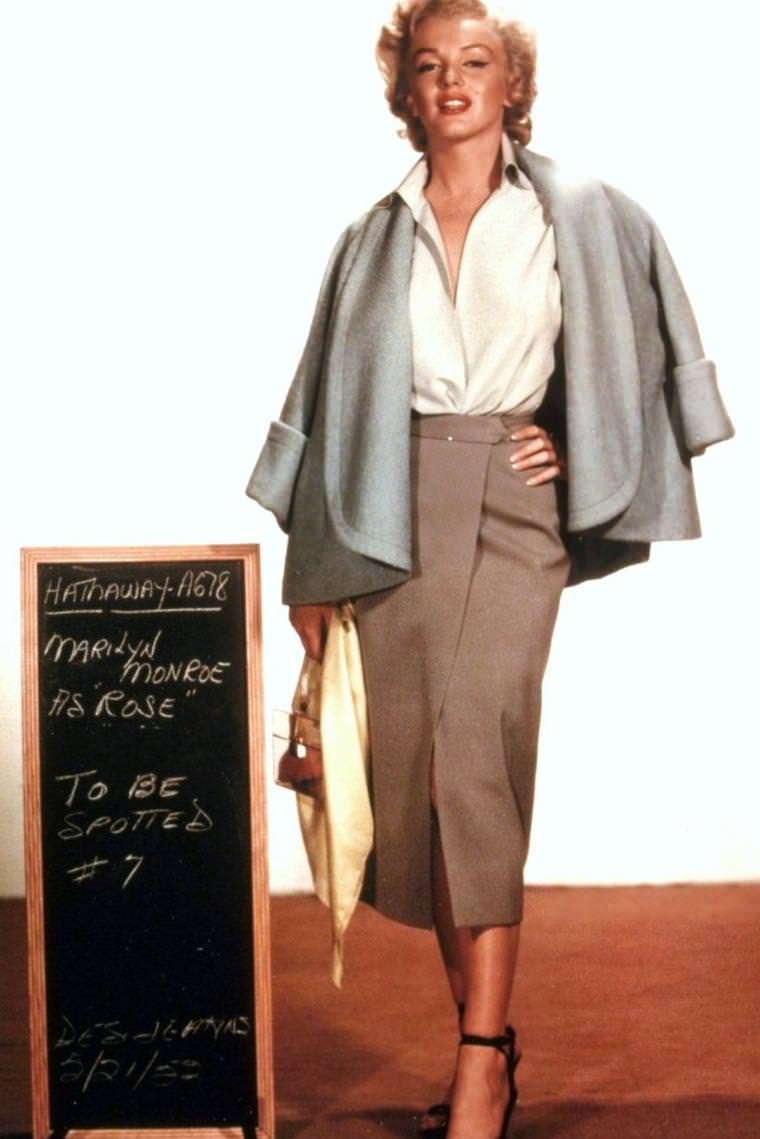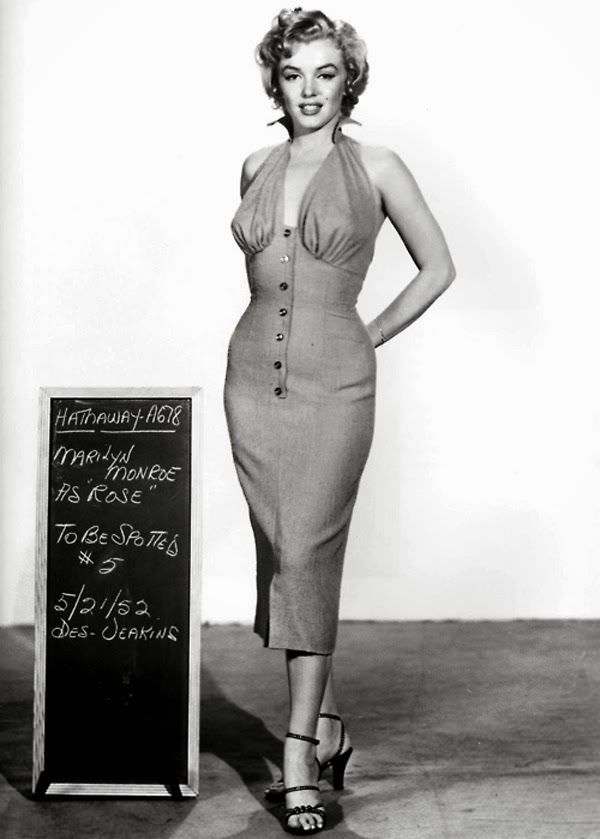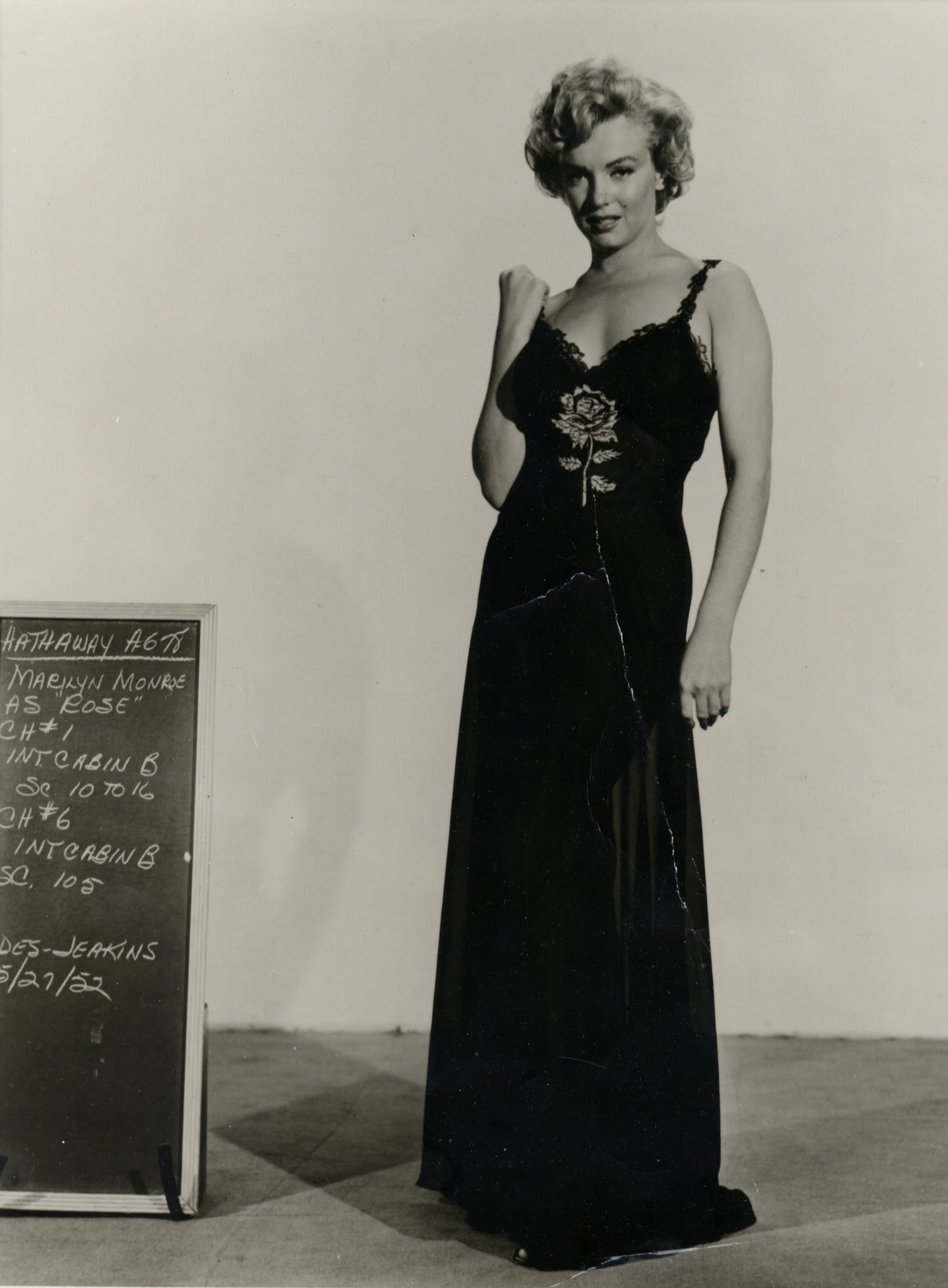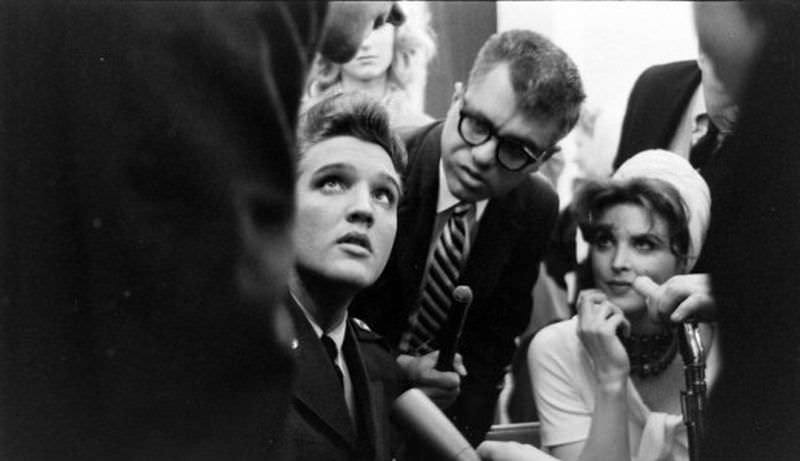The year is 1952. A young Marilyn Monroe, on the cusp of stardom, prepares for a role that could change everything: Rose Loomis in the thriller, Niagara. The iconic falls serve as a dramatic backdrop, but before any filming can start, there’s the crucial matter of wardrobe. Clothes aren’t just costumes; they’re a language, speaking volumes about Rose’s personality, desires, and the danger she embodies.
In a series of captivating photos, we witness Marilyn’s transformation. Each outfit, a new layer of Rose’s character. Tight sweaters hint at her sensuality, elegant dresses speak of her allure, while casual wear reveals a down-to-earth facade. It’s a fashion metamorphosis, a glimpse of the actress discovering her power through clothing.
Behind the scenes, it’s a team effort. Costume designers, makeup artists, and hair stylists collaborate, tirelessly experimenting. Hairstyles shift from loose waves to sleek updos, makeup from subtle to dramatic. Their goal: to enhance Marilyn’s natural beauty, to create a look that’s both alluring and unsettling.
These wardrobe tests offer a peek into the glamorous world of 1950s Hollywood. Cinched waists, full skirts, bold prints – it’s a fashion time capsule, a reminder of an era when style was an art form. Marilyn, in these outfits, is the embodiment of that era, a trendsetter in the making.
Niagara would prove a turning point. The film was a hit, and critics lauded Marilyn’s performance. Her wardrobe choices played a key role, crafting a character that was both seductive and dangerous. The pink dress became iconic, replicated and reimagined countless times, a testament to the enduring power of fashion.


